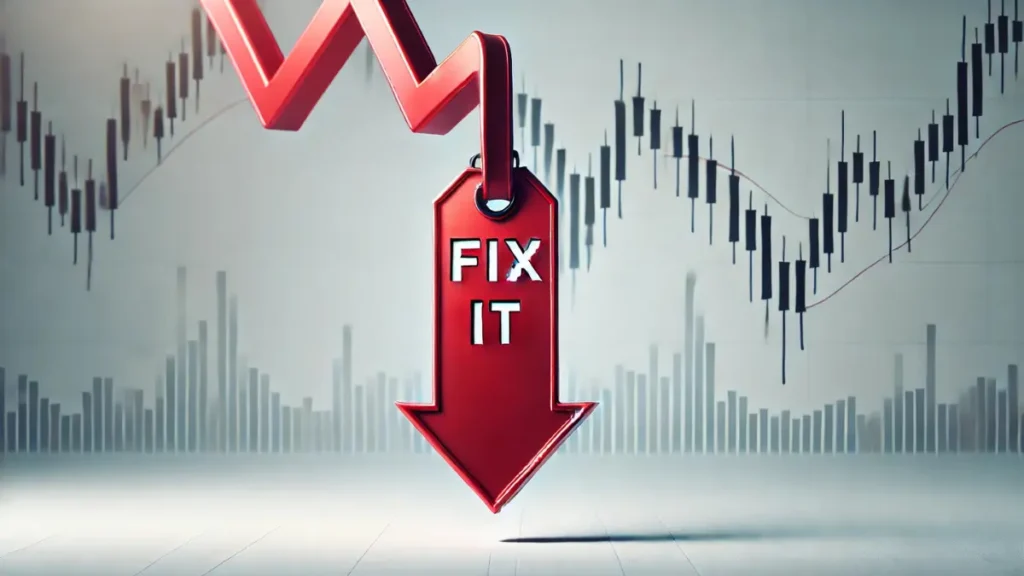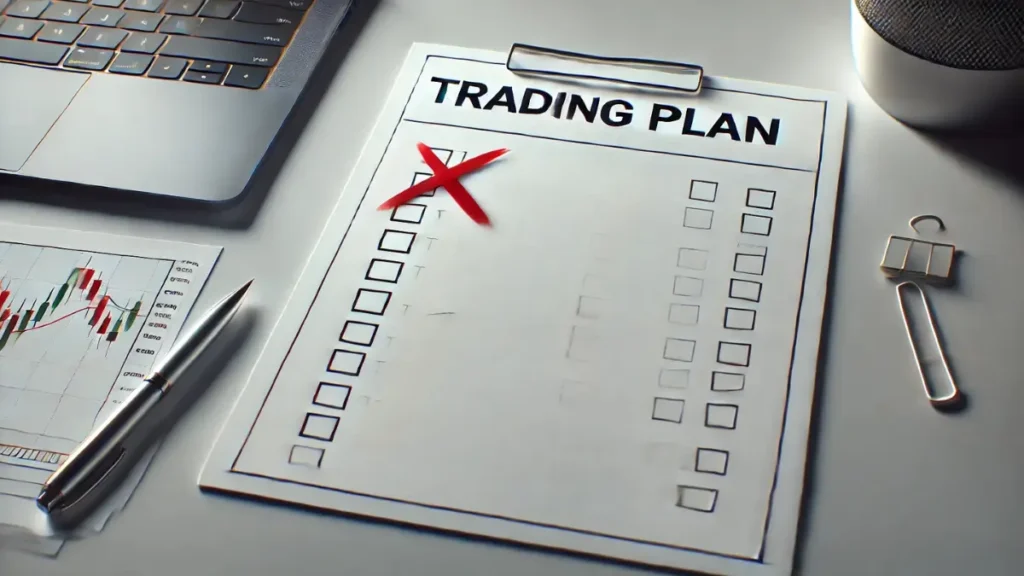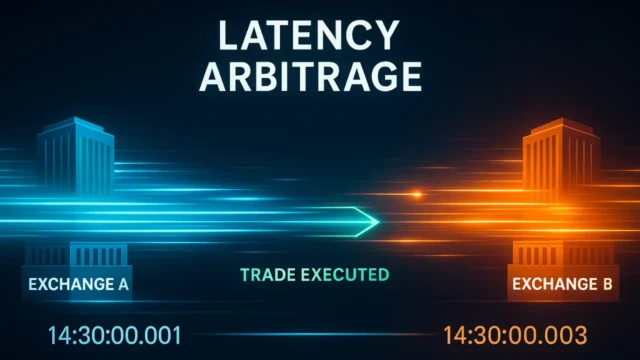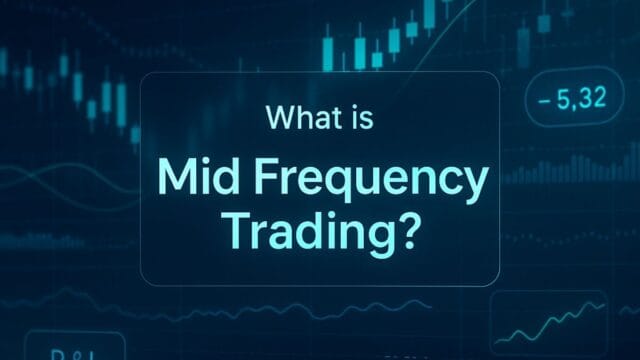Follow Us
Stop Losing Money: 12 Common Trading Mistakes to Fix

Table of Contents
Common Trading Mistakes: Learn or Keep Losing
Trading can be thrilling, but it can also empty your wallet faster than you can say “margin call.”
The hard truth? Most traders blow up their accounts not because they lack talent, but because they keep making the same avoidable mistakes.
But you’re here, and that’s already a win. This isn’t your typical “don’t trade emotionally” fluff.
We’re digging into real, experience-backed trading pitfalls that trip up beginners & seasoned traders alike & how to fix them before they torch your profits.
I. Foundation Errors (Beginner Pitfalls)

1. Starting Without a Trading Plan
Why You Can’t Wing It:
Trading without a plan is like driving blindfolded—you’ll crash; it’s only a matter of time. Many beginners jump into trades based on gut feelings or hot tips from social media.
The result? Random wins followed by consistent losses. Trading isn’t about luck—it’s about strategy.
Would you open a business without a business plan? No? Then why treat trading differently?
A trading plan keeps you disciplined when emotions scream, “Go all in!” or “Sell NOW!” Without one, you’re just gambling with extra steps.
Fix: How to Create a Personalized Trading Blueprint
Step 1: Define Your Goals (Be Specific)
- Bad Goal: “I want to make money.”
- Good Goal: “I aim for a 5% monthly return with a max risk of 2% per trade.”
Step 2: Set Entry & Exit Rules
- Use clear criteria like technical indicators (e.g., moving averages) or price levels.
- Example: “I’ll enter when the stock breaks above its 50-day moving average & exit if it closes below support.”
Step 3: Manage Risk Like a Pro
- Risk/Reward Ratio: Aim for at least 2:1. If you’re risking $100, your target should be $200+.
- Stop-Loss: Always use a stop-loss order. No exceptions.
Step 4: Journal Every Trade
- Write down why you entered a trade, what happened, & how you felt. This habit exposes patterns that help you improve.
Pro Tip:
Automate parts of your plan where possible. Use trading alerts or conditional orders so you’re not glued to the screen. This keeps you from making impulsive, costly mistakes.
Bottom Line:
A trading plan isn’t optional—it’s survival gear. No plan? No profits. Start building yours before your next trade. Future you will thank you.
2. Lack of Market Education
Guessing Isn’t a Strategy:
Let’s get one thing straight—trading is not gambling. If you’re guessing your way through the market, you’re playing a losing game.
Success in trading comes from knowledge, not luck. Without understanding market dynamics, technical analysis, and trading strategies, you’re flying blind & market loves taking money from unprepared traders.
The market doesn’t care about your hopes or dreams—it rewards skill, preparation, and patience.
If you think reading a couple of tweets from “finance gurus” counts as learning, you’re already in trouble.
Fix: Reliable Learning Resources
Want to avoid being market bait? Start with these proven learning strategies:
- Master the Basics (Skip the Hype)
- Learn how the market works—what moves prices, trading hours, and market types.
- Resource Tip: Read Big Brain Money’s beginner guides for clear, no-fluff breakdowns.
- Study Trading Strategies (Find What Works for You)
- Learn technical analysis (charts, indicators) & fundamental analysis (company performance).
- Resource Tip: Explore in-depth strategy articles & tutorials from reliable sources, that do not want to earn on your loss, like those Telegram Scams!
- Follow Market News (Stay Updated)
- Subscribe to financial news platforms or market analysis blogs—but avoid “pump-and-dump” hype.
- Practice with a Demo Account
- Use demo accounts to practice trading without risking real money. Treat it like it’s your actual account to build good habits.
- Join a Trading Community (Learn from Others)
- Engage in trading forums. Real stories and shared experiences can be eye-opening.
Pro Tip:
Avoid information overload. Pick a few trusted resources (like us) & focus on consistency. The goal is progress, not perfection.
Bottom Line:
Trading is a skill, you can’t wing it. Put in the work, learn the craft, & watch the market start making sense. Ignorance is expensive. Education is an investment. Choose wisely.
3. Trading with Emotions
When Feelings Cost You Money:
Trading on emotions is like driving drunk – you’re not in control, and disaster is inevitable. Fear, greed, & frustration can cloud your judgment, leading to impulsive decisions like panic-selling or revenge-trading after a loss.
The result? A drained trading account & a bruised ego.
Markets don’t care about your feelings. Whether you’re euphoric after a win or panicked after a loss, emotional trading guarantees costly mistakes.
Success comes from sticking to logic, not “I have a feeling this will skyrocket.”
Fix: Proven Techniques for Controlling Emotional Reactions
- Create a Pre-Trade Checklist
- Before every trade, answer:
- Is this trade within my strategy?
- Have I set a stop-loss & take-profit?
- Am I emotionally stable (not stressed or overconfident)?
- Before every trade, answer:
- Use Mindfulness Techniques
- Take breaks, breathe, and stay present. A 5-minute mindfulness session can help clear mental clutter before trading.
- Stick to a Trading Plan (No Exceptions)
- Follow your pre-defined rules for entries, exits, and risk management. This reduces emotional decision-making.
- Limit Screen Time
- Staring at charts all day creates anxiety and leads to overtrading. Schedule specific trading sessions and step away.
- Keep a Trading Journal (Your Truth Teller)
- After each trade, jot down:
- Why you entered the trade
- What you were feeling at the time
- How you reacted afterward
- After each trade, jot down:
Reviewing your journal reveals emotional patterns you can fix. You’ll see when you’ve traded out of fear, greed, or boredom & learn how to stop.
Use This instead:
Use automated tools like stop-loss orders or trading bots to remove emotions from your trading process entirely. Let the system execute for you when you’re tempted to break the rules.
Bottom Line:
You can’t eliminate emotions—but you can control how you react. Trade with your head, not your heart. The only place emotions belong in trading is in your journal, not your account.
II. Strategy Mistakes (Intermediate Pitfalls)

4. Overtrading & Revenge Trading
More Trades, More Problems:
More trades don’t mean more profits. In fact, overtrading usually means more losses, more stress, and higher fees.
Many traders, especially after a losing streak, fall into the trap of “revenge trading,” trying to win back losses by doubling down.
Spoiler alert: This rarely works & often leads to blowing up your entire account.
Trading isn’t a game where “just one more trade” makes everything right. The market isn’t a casino that owes you anything. Chasing losses only makes the hole deeper.
Successful traders know when to step back, cool off, and wait for high-quality setups, not “might as well” trades.
Fix: How to Avoid Overtrading & Revenge Trading
- Set Daily/Weekly Trading Limits
- Max Number of Trades: Decide how many trades you’ll take per day/week. Stick to it, even when tempted.
- Max Loss Limit: Stop trading if you hit your daily/weekly loss limit (e.g., 3% of your portfolio).
- Create a Trade Quality Checklist
- Before entering a trade, ask yourself:
- Is this setup part of my trading plan?
- Is the reward worth the risk (minimum 2:1 ratio)?
- Am I trading because I see opportunity or because I feel desperate?
- Before entering a trade, ask yourself:
- Schedule Trading Sessions
- Set specific trading hours and avoid being glued to the screen. Being overly active often leads to impulsive trades.
- Use Automated Alerts & Orders
- Set price alerts for key levels, so you’re not constantly checking the market. Use stop-loss and take-profit orders to manage risk before emotions kick in.
- Take a “Cool-Off” Break After Losses
- After a losing trade, take a 10-minute walk, stretch, or just disconnect. Coming back with a clear head beats chasing losses every time.
Bottom Line:
Overtrading and revenge trading are account killers.
Fewer, higher-quality trades = more consistent profits.
Remember, you’re in a marathon, not a sprint. Slow down, stay disciplined, and let the profits come to you.
5. Ignoring Risk Management
Protect Your Money Before You Lose It:
Even the best-looking trades can blow up in your face. No setup is guaranteed, and ignoring risk management is the fastest way to lose everything.
Successful traders aren’t defined by how often they’re right—they’re defined by how well they protect their capital when they’re wrong.
Risk management isn’t cool to hear, it’s not as fun as bragging about a “10x win.”
But here’s the truth: You can win 70% of your trades and still lose money if you don’t control risk.
Blowing up your account once because you “forgot” to set a stop-loss will teach you this lesson the hard way—or you can learn it now for free.
Fix: Crafting a Robust Risk Management Plan
- Determine Position Sizing (Bet Smart, Not Big)
- Use the 1% Rule: Never risk more than 1% of your trading capital on a single trade.
- Example: If you have $10,000 in your trading account, risk no more than $100 per trade.
- Set Stop-Loss Orders (Non-Negotiable)
- Always use a stop-loss, even if you’re “sure” the trade will work.
- Stop-Loss Placement Tips:
- Technical Stop: Use key support/resistance levels.
- Volatility Stop: Adjust stops based on market volatility (e.g., ATR indicator).
- Define Risk/Reward Ratios (Trade Only What’s Worth It)
- Aim for a minimum 2:1 risk/reward ratio.
- Example: If your risk is $100, your target profit should be at least $200. No exceptions.
- Set a Daily/Weekly Loss Limit (Know When to Stop)
- Decide how much you’re willing to lose in a day/week before stopping.
- Example: If you lose 5% of your account in a week, take a break and reassess.
- Diversify Your Portfolio (Don’t Bet It All)
- Spread your trades across different asset classes or strategies to avoid overexposure.
Bottom Line:
Trading without risk management is financial suicide. Your goal isn’t just to make money—it’s to protect what you already have. Play defense first, and profits will follow.
6. Chasing the Market (FOMO Trading)
Don’t Be the Last to the Party:
Ever see a stock or crypto skyrocketing and feel that “I need to get in now, or I’ll miss out!” urge? That’s the dreaded Fear of Missing Out (FOMO).
Jumping into trades late because “everyone’s talking about it” usually means buying at the top, right before prices crash. FOMO trading drains accounts faster than a viral meme trade burns out.
The market doesn’t reward emotional decisions – it punishes them.
If you’re chasing after every “hot” trade because it “feels like easy money,” you’re already playing a losing game.
By the time the news hits your feed, smart traders are already cashing out while you’re buying the hype.
Fix: How to Create a System That Spots Trends Early & Reduces FOMO
- Follow a Proven Trading Strategy (Forget the Noise)
- Use a consistent trading strategy based on technical indicators like trendlines, moving averages, or breakout patterns.
- Example: Wait for a confirmed breakout from a resistance level before entering—not when the asset is already up 30%.
- Use Trend-Spotting Tools (Stay Ahead)
- Trend Indicators to Watch:
- Moving Averages (50-day, 200-day)
- Relative Strength Index (RSI) for overbought/oversold signals
- Volume Spikes for early trend confirmation
- Trend Indicators to Watch:
- Create Pre-Trade Rules (No Impulse Buys)
- Set strict criteria for entering trades, such as:
- Price closing above/below a moving average
- Confirmation of a chart pattern (like a triangle breakout)
- Set strict criteria for entering trades, such as:
Pro Tip:
Adopt a mindset that “there will always be another opportunity.” Missing one trade won’t break your trading career—losing your capital will. Stay patient, wait for the right setup, and trade on your terms.
Bottom Line:
FOMO trading turns potential profits into real losses. Build a system that helps you spot trends early, trust your strategy, and trade like a pro—not like a hype-chaser.
III. Technical & Analytical Errors (Advanced Pitfalls)

7. Relying Solely on Indicators
Tools Help, But They Don’t Think:
Indicators are helpful tools, but relying on them alone is like using a GPS with outdated maps—you’ll miss the turn and crash your account.
Indicators are lagging by nature, meaning they react after price movements have already happened.
By the time they signal a trade, seasoned traders have already taken profits while you’re left holding the bag.
Indicators don’t predict the market, they just interpret past data. If you’re blindly stacking indicators like it’s a video game power-up, you’re playing yourself.
Indicators are just guides, not guarantees. Price action tells the real-time story—learn to read it.
Fix: Combining Indicators with Market Structure Analysis
- Master Price Action First (The Market’s Language)
- Learn to spot key market structures like:
- Support & Resistance Levels: Where price frequently reverses.
- Trendlines: To track market direction.
- Candlestick Patterns: Reversal signals like Doji, Engulfing, or Pin Bars.
- Learn to spot key market structures like:
- Use Indicators as Confirmation Tools (Not Decision Makers)
- Use one or two indicators max—any more and you’ll confuse yourself. Examples:
- Moving Averages: Confirm trends (e.g., 50-day or 200-day).
- RSI (Relative Strength Index): Detect overbought/oversold conditions.
- Volume Indicator: Check if breakouts have strong backing.
- Use one or two indicators max—any more and you’ll confuse yourself. Examples:
- Create a Clear System (Rules, Not Gut Feelings)
- Example Trading Rule:
- Entry Trigger: Price breaks a key resistance level and RSI shows bullish momentum above 50.
- Exit Trigger: Price closes below a trendline or shows bearish candlestick patterns.
- Example Trading Rule:
- Stay Flexible (Adapt to Market Conditions)
- Some days, price action alone tells the story (especially during news-driven volatility). Other times, indicators can help filter out false signals. Be adaptable.
Useful Tip:
If you’re new, practice reading naked charts (price action only) for at least a month before adding indicators. This forces you to focus on what really matters – the raw market moves.
Bottom Line:
Indicators are just tools—not the boss of markets. Use them to confirm what price action is already telling you. The market doesn’t care about your MACD or RSI settings, it cares about price. Learn to read it, and you’ll stop trading blind.
8. Neglecting Fundamental Analysis
Know the Story Behind the Charts:
Technical analysis shows you what is happening in the market, but only fundamental analysis tells you why.
Ignoring fundamentals is like judging a book by its cover—you miss the deeper story driving price action.
Earnings reports, interest rate decisions, and market sentiment can cause massive market moves that technical charts alone can’t predict.
Relying solely on technical analysis is like trying to predict the weather by just looking out the window—you’ll miss the storm forming behind the clouds.
Fundamentals reveal the real driver behind market moves, so why skip them? The pros always know what’s going on behind the charts.
Fix: How to Blend Fundamental Insights into a Technical Strategy
- Track Key Market Fundamentals (Stay Informed)
- Stocks:
- Earnings Reports (EPS growth, revenue beats/misses)
- Company News (mergers, product launches)
- Industry Trends (sector performance)
- Forex/Commodities:
- Central Bank Policies (interest rate changes, inflation data)
- Economic Indicators (GDP, unemployment rates)
- Global Events (geopolitical tensions, supply chain issues)
- Stocks:
- Align Fundamentals with Technical Setups (Double Confirmation)
- Look for technical patterns that align with fundamental catalysts:
- Example 1: A stock reports record earnings (bullish fundamental) and breaks above key resistance (bullish technical).
- Example 2: Weak economic data triggers a sell-off in currency pairs, confirming a bearish trendline break.
- Look for technical patterns that align with fundamental catalysts:
- Create a Fundamental Watchlist (Trade the Why)
- Track economic calendars for major events like:
- U.S. Non-Farm Payrolls (Forex)
- FOMC Meetings (Federal Reserve)
- Earnings Seasons (Stocks)
- This helps you anticipate high-impact market moves before they hit the charts.
- Track economic calendars for major events like:
- Use Sentiment Indicators (Smart Edge)
- Watch tools like the Commitment of Traders (COT) Report or Market Sentiment Index to gauge if institutions are bullish or bearish—before the technical crowd catches on.
Use this method:
Keep it simple: Pair one fundamental driver with one technical signal. This keeps your trading process clear and helps you avoid over-complicating things.
9. Poor Trade Execution Timing
Timing Is Everything:
In trading, when you enter or exit a trade is just as important as what you trade. Even the best setups can fail if you time your trade poorly.
Entering too late means chasing a price that’s already moved. Entering too early leaves you vulnerable to fake breakouts or volatile swings.
Bad timing kills profit potential faster than any technical mistake.
You could be right about a trade direction but still lose money if your execution timing stinks.
Fix: How to Master Order Types and Execution Strategies
- Know the Right Order Types (Choose Wisely)
- Market Order: Executes instantly at the current price—but watch out for slippage during volatile markets.
- Limit Order: Sets a specific entry price, ensuring no overpaying—but it might not get filled if the market moves fast.
- Stop-Loss Order: Automatically closes a losing trade at a pre-set price, limiting your losses.
- Take-Profit Order: Locks in profits when the price hits a pre-set target.
Pro Tip: Use Stop-Limit Orders for precise entries during breakouts, avoiding fake-out moves.
- Time Entries Like a Pro (No Guessing)
- Wait for Confirmation: Avoid jumping in based on a “hunch.” Let the market confirm your setup.
- Use Multi-Timeframe Analysis:
- Check higher timeframes (like daily charts) for overall trend direction.
- Use lower timeframes (like 1-hour or 15-minute charts) for precision entries.
IV. Psychological & Long-Term Mistakes

10. Lack of Patience (Instant Gratification)
Success Takes Time, a lot of Time!
Trading rewards the patient, not the lucky. If you’re chasing instant profits, the market will happily take your money.
Many traders want overnight success, expecting every trade to be a winner. The reality? Consistency over time creates lasting success—not one lucky trade.
Stop forcing trades because you’re bored or desperate to hit it big—you’re only speeding up your losses.
Fix: How to Adopt a Long-Term Growth Mindset Through Consistent Journaling
- Shift Your Mindset from “Fast Money” to “Smart Money”
- Think like a business owner, not a gambler. Businesses plan, adjust, and grow steadily, they don’t expect million-dollar sales overnight.
- Replace “I need to make money fast” with “I need to improve my process.”
- Keep a Trading Journal (Your Personal Coach)
- After each trade, log:
- What you traded: Asset, entry/exit price, and size.
- Why you entered: Based on your trading plan (not emotions).
- What happened: Profit/loss, market conditions, and technical patterns.
- How you felt: Calm? Nervous? Impulsive? This reveals emotional patterns.
- After each trade, log:
- Review Your Journal Weekly (Find Patterns)
- Identify recurring mistakes like:
- Exiting trades too early out of fear.
- Jumping into trades without full confirmation.
- Look for winning habits, too—then repeat what works.
- Identify recurring mistakes like:
- Set Long-Term Trading Goals (Not Just Monthly Targets)
- Break goals into achievable milestones:
- Example: “I’ll improve my risk/reward ratio to 2:1 by the end of the quarter.”
- Break goals into achievable milestones:
Must for a clutter-free mindset:
Use tracking tools like trading journals, spreadsheets, or dedicated apps. Seeing your progress in black and white builds confidence and curbs emotional trading.
Bottom Line:
The market pays those who play the long game. Chasing instant results leads to emotional rollercoasters and blown accounts. Stay patient, track your progress, and commit to improvement—not instant success. Your future self will thank you.
11. Ignoring Trading Journals
Track It or Forget It:
You can’t fix what you don’t track. Most traders skip journaling because it feels like homework—but it’s the difference between a losing trader and a consistently profitable one.
Without a trading journal, you’re flying blind, repeating the same mistakes without even realizing it.
Every pro trader I know keeps a detailed journal because they understand that data beats hope every time.
Fix: How to Build a Trading Journal That Tracks Performance, Emotions, and Insights
- Set Up Your Journal (Keep It Simple)
- Use a spreadsheet, trading journal app, or even a notebook—whatever you’ll stick with.
- Track Key Data Points (Performance Metrics)
- Date & Time: When you entered/exited the trade.
- Asset Traded: Stock, forex pair, crypto, etc.
- Entry & Exit Price: Exact numbers (no rounding).
- Position Size: How much you traded (in shares, lots, or coins).
- Profit/Loss: In dollars and percentage terms.
- Risk/Reward Ratio: Compare what you risked vs. what you earned.
- Log the “Why” Behind the Trade (Decision Process)
- Reason for Entry: Describe the setup—technical pattern, breakout, or news event.
- Trading Plan Rules: Did you follow your pre-set strategy? Yes/No (be honest).
- Track Your Emotions (The Hidden Game-Changer)
- Write down what you felt before, during, and after the trade:
- Were you calm or anxious?
- Did FOMO push you into the trade?
- Did greed or fear cause you to exit early or hold too long?
- Write down what you felt before, during, and after the trade:
- Review & Analyze Weekly (Learn or Burn)
- Ask yourself:
- What mistakes did I repeat? (e.g., entering trades too early).
- What worked well? (e.g., waiting for confirmation).
- What can I improve? (e.g., using tighter stop-losses).
- Ask yourself:
Helpful Tip:
Add screenshots of your trades with marked entry/exit points. Visual evidence makes reviewing trades much clearer.
Bottom Line:
A trading journal turns your trades into lessons. Without it, you’re doomed to repeat avoidable mistakes. Take the time to track your trades—you’ll thank yourself when your results finally start improving. Data-driven trading isn’t optional, it’s how you win.
12. Failure to Adapt
Evolve or Fall Behind:
Markets evolve, trends shift, and strategies that worked yesterday can stop working tomorrow.
The market owes you nothing. What worked last month might be completely useless now. Successful traders evolve with the market—they don’t cling to outdated strategies hoping they’ll “come back.”
The market doesn’t wait for anyone. Adapt—or get left behind.
Fix: Staying Updated with Market Guides and Updates
- Follow Market News and Trends (Stay Ahead)
- Subscribe to trusted financial news sources and economic calendars.
- Review and Update Your Trading Plan (Stay Relevant)
- Quarterly Trading Plan Checkups:
- Review your strategy every three months. Is it still working in current market conditions?
- Adjust trading rules based on new trends (e.g., increased market volatility or sector shifts).
- Quarterly Trading Plan Checkups:
- Learn New Strategies (Expand Your Playbook)
- Stay curious—explore new trading methods like:
- Swing Trading: For more extended market moves.
- Options Trading: For hedging or leveraging capital.
- Fundamental Analysis Updates: Consider market catalysts beyond technical patterns.
- Stay curious—explore new trading methods like:
- Engage with a Trading Community (Stay Informed)
- Join Trading Forums and Market Discussions. Learn from real traders sharing real-time insights and adapting strategies as conditions change.
Use back-testing to innovate new strategies:
Backtest New Strategies: Use historical data to test new approaches before risking real money. Adapt fast, but adapt smart.
Common Trading Mistakes & How to Fix Them (For Quick Reference)
| Common Trading Mistake | Why It Hurts | How to Fix It |
| Starting Without a Trading Plan | Leads to impulsive and random trades. | Create a personalized trading plan with specific entry, exit & risk management rules. |
| Lack of Market Education | You trade blindly and lose money fast. | Study reliable sources, and practice on a demo account. |
| Trading with Emotions | Causes impulsive decisions and big losses. | Use a trading journal, practice mindfulness, and follow a set trading strategy. |
| Overtrading & Revenge Trading | Increases fees, stress, and account losses. | Set daily/weekly trading limits and use price alerts to avoid impulsive trading. |
| Ignoring Risk Management | One bad trade can wipe out your account. | Use stop-loss orders, risk only 1-2% per trade, and aim for a 2:1 reward-to-risk ratio. |
| Chasing the Market (FOMO Trading) | Leads to buying late and selling low. | Use trend-following systems and wait for pullbacks instead of chasing spikes. |
| Relying Solely on Indicators | Indicators lag and can mislead trades. | Combine indicators with price action and key market structure analysis. |
| Neglecting Fundamental Analysis | You miss major market-moving events. | Track economic news, earnings reports, and major policy changes alongside charts. |
| Poor Trade Execution Timing | Causes slippage and missed opportunities. | Use appropriate order types, wait for confirmations, and avoid trading during volatile events. |
| Lack of Patience (Instant Gratification) | Leads to early exits and missed profits. | Focus on long-term goals, review your trading journal, and track gradual improvement. |
| Ignoring Trading Journals | You can’t track or fix what you don’t log. | Record trade details, performance stats, and emotional responses after each trade. |
| Failure to Adapt | Sticking to old strategies leads to losses. | Update your trading plan regularly with market guides from trusted sources like BBM. |
FAQ Section
What are the most common beginner trading mistakes?
The most common beginner trading mistakes include trading without a plan, making emotional decisions, ignoring market education, overtrading & failing to manage risk properly. Avoiding these mistakes helps build consistent, long-term trading success.
How do I avoid emotional trading?
To avoid emotional trading, follow these steps:
1. Use Stop-Loss Orders: Automate exits to reduce emotional reactions.
2. Create a Trading Plan: Stick to defined entry, exit, and risk rules.
3. Practice Mindfulness: Take breaks, manage stress, and avoid trading when emotionally unstable.Is overtrading a big problem?
Yes, overtrading is a significant problem. It leads to higher transaction fees, increased stress, and rapid capital loss due to impulsive trading decisions. Limit trades, set daily/weekly trade caps, and avoid revenge trading to prevent overtrading.
What’s the best way to manage risk in trading?
The best way to manage trading risk includes:
1. Set Stop-Loss Orders: Protect against major losses.
2. Diversify Positions: Spread investments across different assets.
3. Risk Small Amounts: Limit risk to 1-2% of your trading capital per trade.
4. Use a Trading Journal: Track performance and adjust strategies.Can I trade without using indicators?
Yes, you can trade without indicators by using price action trading. This method focuses on analyzing raw price movements, market structure, and candlestick patterns to make trading decisions, no indicators required. Many professional traders rely on this strategy for clearer, real-time analysis.
Learn, Adjust, Win
Trading isn’t about being perfect—it’s about learning, adapting, and improving with every trade.
Avoiding common trading mistakes like skipping risk management, overtrading, and emotional decision-making can transform your trading experience from frustrating losses to consistent gains.
What’s Next?
- Build Your Trading Plan: Start by crafting a personalized trading strategy with clear rules.
- Educate Yourself Continuously: Explore Big Brain Money’s in-depth guides on trading strategies, risk management, and market analysis.
- Use the Right Tools: Try to plan risk-reward ratios and position sizes accurately.
Disclaimer:
This content is for informational purposes only and should not be considered financial advice.
Read full Disclaimer.




